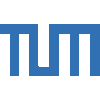- Speaker: Dr. Paul Plucinsky (USC)
- Date: Mar 03, 2020
- Location: Technische Universität Dresden, WIL C 307
Abstract
What started as a popular Japanese artform, Origami is fast emerging as a powerful design tool in engineering. This is especially true in applications spanning deployable space structures, biomedical devices and soft robotics, where a significant challenge is to design surfaces capable of large, yet precise, changes in shape. Origami facilitates desirable shape-control by the careful architecting of crease patterns, creating a structure both robust to perturbations and actuated by few degrees of freedom overall. Nevertheless, most engineering with origami focuses on well-known patterns or minor off-shoots thereof, limiting the shape-morphing configuration space. So to truly harness the full potential of origami in the aforementioned and related applications, broad and systematic design principles are wanting.
This presentation will explore general principles: In the first part, we characterize the designs and deformations of all possible rigidly and flat-foldable origami. In the second part, we outline a procedure to characterize all possible origami structures with discrete symmetries, and we apply this procedure to develop the phase-space of multi-stable cylindrical tubes termed Helical Miura Origami.
Bio
Paul Plucinsky joined the faculty in the USC Department of Aerospace and Mechanical Engineering as an Assistant Professor in January of 2020. Prior to USC, Paul was a Postdoctoral Scholar in Aerospace Engineering and Mechanics at the University of Minnesota. He received his Ph.D. in Mechanical Engineering at Caltech in 2017. Paul works at the interface of solid mechanics, materials science and applied mathematics. He applies a theory-guided approach to a range of topics, including nematic elastomers, origami design, shape memory alloys, and phase transitions in nano-structures.






